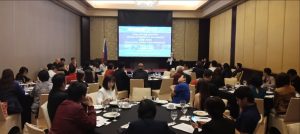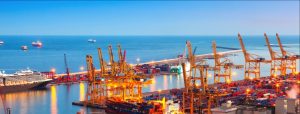
The Department of Trade and Industry (DTI) through the Export Marketing Bureau, the Philippine Exporters Confederation, Inc. (PHILEXPORT) and the Export Development Council leads the conduct of the 2018 National Export Congress (NEC). NEC is the highlight of the week-long celebration of the National Exporter’s Week (NEW). This year’s theme, “SPICE Up to Scale Up! (Stimulate. Permeate. Innovate. Connect. Expand!)”, is consistent with the thrust for the Philippine export industry to be at the cutting edge of innovation and connectivity as a competitiveness strategy.
Over 700 delegates including exporters, business support organizations, policy makers, and academe will convene at the Philippine International Convention Center (PICC), Pasay City on 07 December 2018 for the annual NEC. The event will have discussions on various topics such as global outlook and prospects for Philippine exports, expanding market, ease of doing business, industry-led innovation and connectivity. Export Enablers Exhibit and Logistics Fair will also transpire during the event which will showcase the services of government clearance agencies, financing institutions, Halal certifying bodies and logistic providers.
The NEC is the main activity of the National Exporters’ Week (NEW). The first week of December is declared as the Exporters’ Week per Presidential Proclamation 931, Series of 1996 and House Resolution 33, in order to obtain total commitment of the government and the private sector to continuously work together to sustain and maintain export promotion and development.
Also part of the week-long NEW celebration is the conduct of Usapang Exports, an information sessions under the DTI-EMB’s Philippine Export Competitiveness Program (PECP), on 03-05 December 2018 and the conduct of Logistics Summit organized by the DTI-Competitiveness Bureau (CB) on 06 December 2018. (MDGTD)




 As the fourth industrial revolution or Industry 4.0 gain momentum, the National Wages and Productivity Commission (NWPC), an attached agency of the Department of Labor and Employment (DOLE), focused its 2018 National Productivity Conference on people-centric technologies & innovation for MSMEs. DOLE Undersecretary Ciriaco Lagunsad, III pointed out that the on-going concern on inflation can also be addressed by improving the productivity of producers which will influence prices. As such, he emphasized the need to embrace new technologies, but put people in control of technology.
As the fourth industrial revolution or Industry 4.0 gain momentum, the National Wages and Productivity Commission (NWPC), an attached agency of the Department of Labor and Employment (DOLE), focused its 2018 National Productivity Conference on people-centric technologies & innovation for MSMEs. DOLE Undersecretary Ciriaco Lagunsad, III pointed out that the on-going concern on inflation can also be addressed by improving the productivity of producers which will influence prices. As such, he emphasized the need to embrace new technologies, but put people in control of technology.


 House Bill (HB) No. 8005 seeks to separate the regulatory and commercial functions of the Philippine Ports Authority (PPA) and create a new port agency called Philippine Ports Corporation (PHILPORTS) will focus on developing, managing, and operating public ports.
House Bill (HB) No. 8005 seeks to separate the regulatory and commercial functions of the Philippine Ports Authority (PPA) and create a new port agency called Philippine Ports Corporation (PHILPORTS) will focus on developing, managing, and operating public ports. “Since the inception of the industry-government-academe linkage, there is now greater participation and partnerships between companies and universities in the implementation of this reform at ground level.” This was reported by Mr. Sergio R. Ortiz-Luis, Jr., president of the Philippine Exporters Confederation (PHILEXPORT) and Vice-Chair of the Export Development Council (EDC), during the recently concluded 8th National Education Forum.
“Since the inception of the industry-government-academe linkage, there is now greater participation and partnerships between companies and universities in the implementation of this reform at ground level.” This was reported by Mr. Sergio R. Ortiz-Luis, Jr., president of the Philippine Exporters Confederation (PHILEXPORT) and Vice-Chair of the Export Development Council (EDC), during the recently concluded 8th National Education Forum.